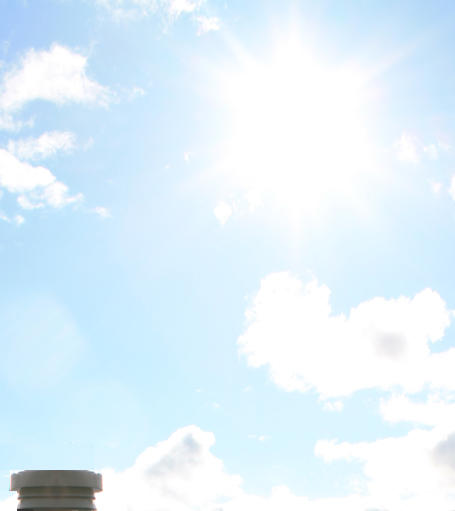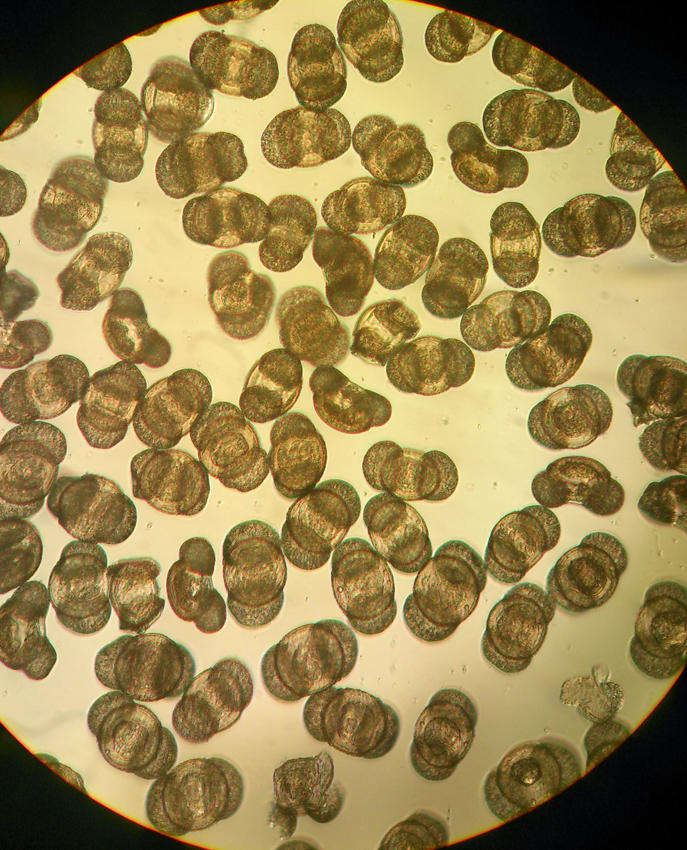PARASOL
PAlynological Reconstructions of pAst SOLar radiation

Hovedinnhold
Increased exposure to ultra-violet radiation (UV-B) is known to have a host of effects on human health, crops, terrestrial ecosystems and biogeochemical cycles. It is also known that there will have been large variations in the amount of incoming UV-B flux throughout Earth's history in response to super-volcanic events and variations in solar input. Modelling estimates suggest that in some intervals in the Earth’s history (e.g. end Permian), incoming UV-B flux could have been up to 80% higher than present. If these estimates are correct then the impact on terrestrial ecosystems could have been profound, affecting all aspects of ecosystems from biomes through to genes, potentially altering the mode and tempo of evolution.
Up until now it has not been possible to reconstruct an accurate measure of UV-B flux through time, but recent research has shown the measurement of aromatic compounds in the wall of pollen grains of Pinus spp can be used to produce reconstructions in incoming UV-B radiation over the past ca. 10,000 years (Rozema et al. 2009; Willis et al. 2011). Production of these aromatic compounds is thought to act as a protection mechanism for exposure to high-energy radiation, and these compounds are preserved in the pollen grains and cell cuticles buried in lake sediments. This project aims to determine systematically, for the first time, the spatial and temporal variability of UV-B that can be obtained using aromatic compounds in fossil pollen and cuticles of leaves/needles contained in organic sedimentary sequences.
The potential of this technique for developing an important measure of UV-B flux against which terrestrial ecosystem responses can be examined is huge (Magri et al. 2011). On short timescales (years- decades), information on past UV-B data may provide important information into our understanding of ecosystem functioning (Rozema et al. 1997); whilst variability in incoming solar radiation on longer timescales (centuries to millennia) may be an important driver in longer-term atmospheric processes (e.g Steinhelber et al. 2012). Similarly, if we are able to detect major volcanic events in the Holocene, then on longer timescales it this method could provide key insights into the extent of UV-B exposure during key evolutionary events in the past.
Research Design:
Our project is designed to test the following hypotheses:
- That the concentration of UV-B absorbing compounds in extant sporopollenin of Pinus spp. pollen and leaf cuticles can be related to spatial variation in UV-B flux.
- That the temporal differences during the Holocene in UV-B flux resulting from differences in solar flux across contrasting regions, can be quantified using the UV-B absorbing compounds in fossil Pinus spp.
Masters Opportunities:
There are currently several opportunities for Masters projects in this project. Please contact alistair.seddon@bio.uib.no for more information.
Researchers:
- Prof Vigdis Vandvik
- Prof Kathy Willis
- Prof John Birks
- Dr Alistair Seddon (Postdoc)
- Mari Jokerud (PhD Student - doctorate awarded 2017)
- Dr Tanja Barth (Geochemistry, UiB)
- Dr Anne Bjune (Uni Research, Bjerknes)
Read an update on the project.
Publications
Jokerud, M. 2017. Plastic response in Pinus spp., determining the temporal window of response and species-level variation of UV-B absorbing compounds to short-term variation in UV-B radiation. PhD thesis, University of Bergen, Norway.
Seddon, A.W.R., Jokerud, M., Barth, T., Birks, H.J.B., Krüger, Vandvik, V. & Willis, K.J. 2017. Improved quantification of UV-B absorbing compounds in Pinus sylvestris L. pollen grains using an internal standard methodology. Review of Palaeobotany and Palynology 247: 97-104. 10.1016/j.revpalbo.2017.08.007
References and Further Reading:
Rozema J, Bjorn LO, Bornman JF, Gaberscik A, Hader DP, Trost T, Germ M, Klisch M, Groniger A, Sinha RP, et al. 2002. The role of UV-B radiation in aquatic and terrestrial ecosystems – an experimental and functional analysis of the evolution of UV-absorbing compounds. Journal of Photochemistry and Photobiology B-Biology 66: 2–12.
Rozema J, Blokker P, Fuertes MAM, Broekman R. 2009. UV-B absorbing compounds in present-day and fossil pollen, spores, cuticles, seed coats and wood: evaluation of a proxy for solar UV radiation. Photochemical & Photobiological Sciences 8: 1233–1243.
Rozema J, van de Staaij J, Bjorn LO, Caldwell M. 1997. UV-B as an environmental factor in plant life: stress and regulation. Trends in Ecology & Evolution 12: 22–28.
Steinhilber F. et al., 2012. 9,400 years of cosmic radiation and solar activity from ice cores and tree rings. Proceedings of the National Academy of Sciences 109: 5967–5971.
Magri D. 2011. Past UV-B flux from fossil pollen: prospects for climate, environment and evolution. New Phytologist, 192: 310–312.
Willis K.J. et al. 2011. Quantification of UV-B flux through time using UV-B-absorbing compounds contained in fossil Pinus sporopollenin. New Phytologist 192(2): 553–560.


